- XMM 위성의 성능 테스트
- 태양 관측 위성의 이미지 프로세싱
- IDL을 이용한 GIS 자료 분석
- 허블 우주 망원경 오차 보정 수리
|
|
|
 |
|
|
The Centre Spatial de Liege uses IDL in the scientific management of qualification tests for the XMM satellite.
The Centre Spatial de Liege has gained worldwide recognition for its qualification and calibration tests of optical instruments used aboard scientific satellites. In 1994 the Centre Spatial de Liege (CSL) signed an agreement with the European Space Agency under which it carries out the qualification of telescopes used on the XMM [X-Ray multi Mirror Mission] satellite. CSL's mission is to verify optical performances of the X-ray telescope when optics are subjected to launch conditions and thermal variations during actual use in space.
In order to test such performances, the Centre Spatial de Li?e has developed a highly sophisticated test container, known as a vat. The telescope is placed in this large cylindrical container where the conditions of space are reproduced.
"We used IDL from the outset, even before the actual construction of the test infrastructure," remarked Michel Leonard, a Liege-based computer engineer. In the aerospace industry, as in many high-technology industries, at the beginning of a project the techniques needed to carry it out do not yet exist. The methods used to determine specifications are similar to experimental research and the selection of prototypal software is a decisive factor in the successful completion of a project.
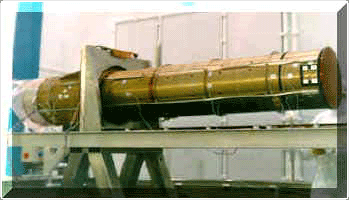 Figure 1: XMM Optical Monitor mounted in FOCAL3 (Facility for Optical Calibration)
Figure 1: XMM Optical Monitor mounted in FOCAL3 (Facility for Optical Calibration)
Development of applications using IDL
"We first used IDL as an applications development environment," says Michel Leonard. "Physicists used IDL because it is simple and high-performing. They developed and tested analysis algorithms using IDL. They worked on simulated results in order to be as close as possible to actual conditions. The team of computer experts then came in and optimized these algorithms, and, using IDL, incorporated them into a larger system directly linking the software and the measuring devices. Little by little, thanks to IDL, it became easy to establish a close collaboration between physicists and computer engineers in developing an automatic image acquisition process."
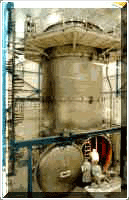 Figure 2: FOCAL X: the new X-ray/EUV facility developed in 1994 for testing the XMM mirrors. The mirror shells are mounted in a vertical vacuum chamber of 4.5-m diameter and 12.2 m height that overhangs X-ray and EUV collimators. The total height of the set-up is about 30 m.
Figure 2: FOCAL X: the new X-ray/EUV facility developed in 1994 for testing the XMM mirrors. The mirror shells are mounted in a vertical vacuum chamber of 4.5-m diameter and 12.2 m height that overhangs X-ray and EUV collimators. The total height of the set-up is about 30 m.
A 20-fold gain in productivity
IDL enabled CSL to save a considerable amount of time through task automation. "The physicists did not have to concern themselves with optimization issues. Thanks to IDL, their only concern was to concentrate on algorithm functionality. We later optimized these procedures and managed to considerably reduce the duration of the application!" says Michel Leonard. "In general, IDL's advantage is that it is not "set in stone", as in traditional programming. This ability to effect continuous change has yielded a 20-fold gain in productivity."
After the prototyping phase, IDL was used to monitor the scientific management of the project. "In order to carry out the tests themselves, we had to set up tests using elaborate equipment and materials," adds Michel Leonard. "More than 60 instruments and robots are used on the project. The IDL software controls cameras, filter wheels, and other control instruments. We have recorded hundreds of thousands of images. Also, IDL has the ability to modify the test environment by acting as an interface with the main control unit that manages the environment. IDL is able to execute measurement and analysis sequences over thousands of hours and does it automatically 97% of the time. This advanced automation has enabled scientists to forgo tedious tasks in favor of scientific work."
IDL enables the application to be entirely remote-controlled
One of the major accomplishments of the Centre Spatial de Liege during the XMM mission has been to make the program entirely remote-controlled, thanks to IDL. "Wherever we are in the world, we can control the execution of the test."
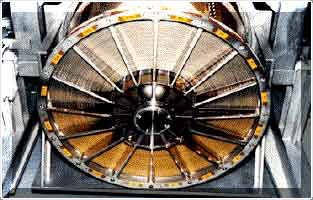 Following the success of the XMM mission, the Centre Spatial de Liege is setting up a new project, which is similar, but even more elaborate. Once again, the team will rely on IDL to successfully carry out this project.
Following the success of the XMM mission, the Centre Spatial de Liege is setting up a new project, which is similar, but even more elaborate. Once again, the team will rely on IDL to successfully carry out this project.
Figure 3: Frontview of a mirror module.
IDL and ENVI are registered trademarks of Research Systems, Inc. ION and Noesys are trademarks of Research Systems, Inc. VIP is a trademark of Intersys, Inc. RiverTools is a trademark of Rivix, LLC. All other trademarks are the property of their respective owners.
|
|
 |
|
|
IDL Plays Fundamental Role in the Field of Solar Physics
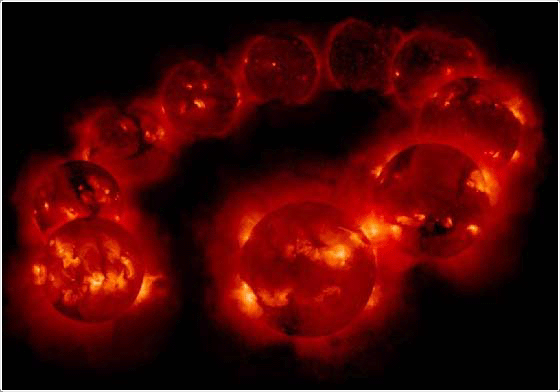
IDL-based SolarSoft Software provides common programming and data analysis environment
These images of the Sun were recorded at roughly equal intervals by the Yohkoh Soft X-ray Telescope (SXT) over a period of seven and a half years, beginning in 1992. They show X-rays emitted by the very hot ionized gas of the Sun's outer atmosphere, or corona. The separate images are arranged in a cyclic curve to emphasize the repeating behavior of the Sun's atmospheric activity, known as the Solar Cycle. During each 11 year cycle, the solar atmosphere gradually changes from a relatively quiescent state to a very active and chaotic state, and back. (Image courtesy of the Lockheed-Martin Solar and Astrophysical Laboratory).
Solar physics has at its core a fundamental challenge: the easy integration and successful analysis of data sets from a large variety of sources. The number of observations made from space is increasing at a dramatic rate, particularly at shorter wavelengths. Almost every mission needs the ability to plot variables against time, examine and compare image data, and fit spectra. In addition, it is time consuming and inefficient to rewrite software for each new mission. In order to realize the full potential of any data from a given instrument, it is necessary to combine them with data from other space-based and ground-based observatories.
In collaboration with an international group of scientists and developers, Sam Freeland, a systems programmer at Lockheed-Martin who has been involved in many solar missions, and Dr. Robert Bentley, a solar physicist at University College London, have developed an IDL-based system called SolarSoft in order to address that challenge. SolarSoft is a set of integrated software libraries, databases, and system utilities which provides a 멵ommon?programming and data analysis environment for any type of solar physics data.
Yohkoh Mission Inspires Development of SolarSoft
The SolarSoftWare (SSW) system is built from several libraries, including libraries from the Yohkoh and SoHO missions and the Solar Data Archive Center (SDAC) and Astronomy libraries, and draws upon contributions from many members of those projects. "The underlying organization and philosophy of the SolarSoft Software (SSW) system structure draws heavily from the Yohkoh data analysis system in particular," explains Dr. Bentley.
Instruments Supported by SolarSoft
Analysis capabilities for a large number of instruments from many different solar missions have been fully integrated into SSW, including:
Yohkoh: BCS, HXT, SXT, WBS
SoHO: MDI, EIT, CDS, SUMER, LASCO
TRACE: TRACE
CGRO: BATSE
GOES: Soft X-ray Monitor
Spartan: Spartan
SMM: XRP, HXIS, HXRBS, CP UVSP, GRS
Radio: ETHZ, Nancay, Nobeyama
Optical: SOON, La Palma
|
Other missions which are expected to participate, with the planned launch dates indicated, include:
HESSI: Hessi (2000) GOES: Soft X-ray Imagers (2000-2005) Solar-B: SOT, XRT, EIS (2004)
At the Institute for Space and Astronautical Science (ISAS) in Japan, where the Yohkoh data analysis was undertaken, many different computer platforms were in use, including Digital VMS, Digital Ultrix, and Sun and RISC workstations running Unix. The format of the filenames, and even the ordering of the bytes within files, differed between these platforms. The Yohkoh observatory included four very different science instruments, and all the instrument teams required access to several ancillary databases, including the Yohkoh ephemeris. "We wanted the commonly desired software functions to be written once, not four times. Because the analysis of data from each Yohkoh instrument is greatly enhanced by context information provided by the other instruments, we decided that we should develop platform-independent analysis software that could be used for all of those data and for all subsequent solar physics data as well," said Dr. Bentley.
Goals of SSW
"We developed the principal goals for SolarSoft when we started preparing for SoHO (Solar and Heliospheric Observatory), the next solar mission after Yohkoh," said Dr. Bentley. "First, we want to promote the use of standards to facilitate the coordinated data analysis of solar physics data. By using these standards, many powerful routines are immediately available for the analysis of new data sets. Secondly, we want to provide a hardware and site independent analysis system, so system access is very easy and open. Thirdly, we include a large reusable software library, which is the core collection of useful routines gathered from many solar missions, and provide easy access to supporting ancillary databases. The access to these supporting data sets from ground-based and satellite-based solar observatories are provided in consistent formats to facilitate coordinated analysis. Lastly, we also provide integrated access to other IDL packages, so users of SolarSoft can really benefit from their IDL experience," he said.
The Role of IDL
"IDL was the ideal language for the analysis of the disparate science data sets from Yohkoh, which include images, spectra and time series datasets. Some of the Yohkoh team members had previously worked on the Solar Maximum Mission (SMM, launched in 1980), or at the Solar Data Analysis Center (SDAC), so they already had extensive experience using IDL. Extending what we already had into a general approach to the problem was just a natural progression," he continued.
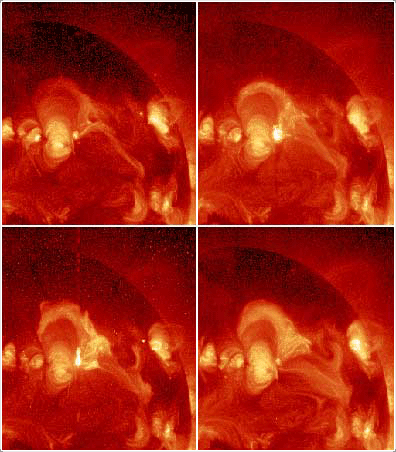
The images shown were obtained from the Soft the X-ray Telescope (SXT) on the Yohkoh solar research spacecraft on February 12, 1992. All four images include the Sun's northwest limb curving from the top of the image to the lower right. The large filamentary structure in the first image is observed in rapid transition in the next three images. These images were enhanced using IDL to bring out the loop structure and the many small bright spots are a result of this enhancement.
On Yohkoh, some teams had initially tried to maintain portions of the software using heritage Fortran programs. They rapidly discovered that in order to support the different platforms used for Yohkoh analysis, five or more executables needed to be built for each task. Updating and propagating an application to the distributed investigator sites in a timely fashion was nearly impossible, since the multiple executables required verification on each of the architectures.
"SolarSoft started as a software tree holding routines which were mostly written in IDL, but it has grown into a complete environment" said Dr. Bentley. "By following a few simple rules, we discovered that IDL code could be made operating system independent. Filenames are never specified with the location of the file included. Rather, environment variables, or their equivalent, are used to indicate file locations within the computer file system. The mapping of several key environmentals to the local, hardware specific pathnames is accomplished by simple modification of the setup files in the site branch. Relative pathnames are then constructed dynamically by interface routines which use the context of the current operating system."
|
The Yohkoh satellite
The Yohkoh satellite is an observatory that studies X-rays and gamma-rays from the Sun. Launched from Kagoshima, Japan on 31 August 1991, Yohkoh is a project of the Japanese Institute for Space and Astronautical Science (ISAS). The spacecraft was built in Japan and the scientific instruments include major contributions from the U.S. and the U.K.
|
"Obviously, the platform independence of IDL been extremely helpful for us for all of these things," he continued. "We therefore decided to translate the bulk of the remaining Fortran software into IDL, and almost all new software has been developed in that language. Because there are well over ten thousand routines in the tree, as more software is added, we are encouraging all contributors to prefix instrument specific routine filenames with their instrument acronym in order to minimize potential collisions in routine names."
SolarSoft and the World Wide Web
The master copy of SolarSoft and support utilities is maintained at the Solar Data Analysis Center at Goddard Space Flight Center (GSFC), which is also the master site for the general purpose SSW library. Since SolarSoft is automatically distributed via the Internet to all remote SSW sites, routines must remain backwardly compatible and continued support for older IDL versions must be considered. "Although the number of instrument libraries and databases under SSW is extensive, a primary design goal was to permit remote sites to install any desired subset of SSW while still preserving the integrated function," explained Dr. Bentley.
An extensive set of routines and techniques has evolved within SolarSoft that leverage Internet technologies and offer great potential for distributed solar physics analysis. In addition to extensive file converters, movie making tools and html generators written in IDL, SolarSoft also includes an innovative set of utilities for executing SolarSoft applications through any Internet browser. This system uses a very simple cgi script of approximately five lines to pass information from a WWW FORM to an IDL server that is running the SolarSoft environment. An SSW IDL interface function converts the FORM stream directly into an IDL data structure. This infrastructure implies that all database searching, access, analysis, and display functions that are available within an interactive SolarSoft session are also available through an Internet client. Examples of this server mode SSW application include the remote SolarSoft software and database installation FORMS, customized Yohkoh/SXT movie maker, the TRACE WWW catalog search and data request system.
This image of coronal loops over the eastern limb of the Sun was taken on November 6, 1999 (at 02:30 UT) by TRACE in its 171 A filter - the loops contain plasma of about 1 million Kelvin. The TRACE spacecraft has been in operation since April 1998 and is designed to observe the Sun's transition region and corona. It was built at Lockheed-Martin Solar and Astrophysical Laboratory (LMSAL), under contract to NASA. The image has been rotated by +90 degrees.
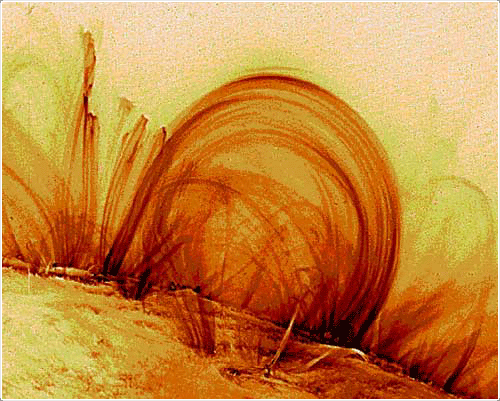
"The success and evolution of SolarSoft depends upon contributions from its many users and SSW instrument team members," concluded Dr. Bentley. "The members of the Yohkoh and SoHO co-investigator institutes, the Solar Data Analysis Center at GSFC, and the Yohkoh Data Archive Centre (YDAC) at the Mullard Space Science Laboratory, have been particularly helpful and instrumental. Special mention must go to Mons Morrison at Lockheed-Martin, and Richard Schwartz, Dominic Zarro and Joe Gurman at GSFC - without their efforts, SolarSoft would not have happened. The support provided by NASA, ESA, and the UK Particle Physics and Astronomy Research Council (PPARC) has also been key to the project.
"We look forward to the continued use of SolarSoft in our studies of the Sun; it has really made the data much easier to share and our discoveries much more rapid. IDL has obviously played a critical role in our success. I can뭪 imagine having developed SolarSoft without it."
|
|
 |
|
|
Interactive "DataScaping" IDL Application Enhances Geographic Visualization
While commercially available geographic information systems (GIS) are suitable tools for storage, retrieval, and analysis of spatial data, they often lack interactive visualization capabilities. Since humans' visual perceptions are a primary source of information acquisition, this shortcoming poses a significant hurdle to making the best analyses of multi-variate data sets.
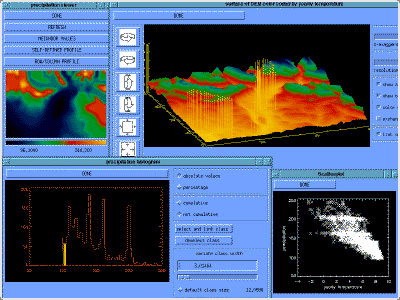
To overcome the data visualization limitations of most GIS systems, Eva-Marie Stephan, working at the University of Zurich's GIS lab, used IDL to design the interactive visualization environment called "DataScaping." This advanced software application provides interactive viewing and exploratory data analysis capabilities for validation of complex data sets, including spatial interpolation, detection of "outliers," and false model assumptions of Arc/Info data.
GUI Tools Speed Development
Stephan's role centers on assessing the needs of geographers and delivering the applications they need to increase their productivity and analysis accuracy.
"IDL is a very good environment for easy and complex GUI building," says Stephan. "The availability of a variety of interface controls and graphical routines, and the possibility to add new routines using a powerful programming language, is a very good concept." Features include 3D and 4D graphical representations, interactivity, dynamic linking of windows, representations for uncertainty in modeled data (blurring, transparency, and probability surfaces), parallel viewing of multiple layers in different scales, animation, and combining and linking realistic and analytic data representations.
Stephan's 3D scenes, called "datascapes," can be manipulated interactively using a mouse to change resolution, exaggeration, range, perspective, and color mapping. "When I prototyped the program," Stephan continues, "I began with standard IDL routines. But, as I became more familiar, I wrote my own. There was a smooth transition, which I appreciated."
Flexible Data Handling and Cross-Platform Functionality
Stephan developed DataScaping on a Sun SPARCstation, but has moved the code to a PowerMac and Silicon Graphics Onyx, where it ran "without any significant problems or code changes."
IDL's ability to handle virtually any data format, including HDF, CDF, and netCDF, ensures that users throughout the GIS lab can implement and make accurate analyses with DataScaping without data conversion hassles.
Superior Data Modeling
DataScaping helps users validate and improve their data modeling and communicate model results and uncertainty for presentations.
"Another plus," Stephan says, is that "IDL is very easy to get started with. Good documentation, introductory tutorial, the many widget examples with code...that's what made me choose IDL and not a 'free' software package." Eva-Maria Stephan currently is working on her Ph.D. at the University of Zurich, in the GIS lab.
|
|
 |
|
|
IDL Plays Key Role in Hubble Space Telescope Servicing Mission
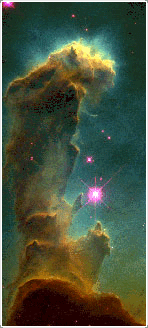 In 1990, the Hubble Space Telescope (HST) was placed in orbit and pointed at deep space. Astronomers around the world anxiously waited for images that might bring new understanding about the beginning of the universe, the nature of distant galaxies and the properties of celestial phenomena. However, instead of brilliant images unaffected by the inherent distortion of the Earth's atmosphere, the HST delivered fuzzy, blurred pictures that revealed little. Investigation into the HST's construction soon revealed that the reflective lens had been ground incorrectly and that astronauts would have to service the HST to rescue the multi-billion dollar telescope.
In 1990, the Hubble Space Telescope (HST) was placed in orbit and pointed at deep space. Astronomers around the world anxiously waited for images that might bring new understanding about the beginning of the universe, the nature of distant galaxies and the properties of celestial phenomena. However, instead of brilliant images unaffected by the inherent distortion of the Earth's atmosphere, the HST delivered fuzzy, blurred pictures that revealed little. Investigation into the HST's construction soon revealed that the reflective lens had been ground incorrectly and that astronauts would have to service the HST to rescue the multi-billion dollar telescope.
Two critical factors helped achieve the success of the servicing mission: tenacious, innovative scientists and technicians who worked quickly and within extremely exact tolerances and precision tools that provided the utmost quality. Paul Scowen, from Arizona State University (ASU), was selected to be an associate member of the Investigation Definition Team because of his exceptional CCD data manipulation skills and interest in star formation and nebulae. The ease of writing and sharing applications, compiling data and visualizing results compelled Scowen and the team to use IDL, the Interactive Data Language, as the software language for testing, calibrating and analyzing data from the Wide Field/Planetary Camera-2 (WF/PC-2). IDL provided a "powerful, flexible language that is easy to use and customize," says Scowen. "As a matter of fact, a colleague of mine has been known to say that with IDL you can be productively working on your data after only a couple days' exposure to the environment."
IDL Indispensable for Critical Testing
At the Jet Propulsion Laboratory (JPL) in Pasadena, CA, the Investigation Definition Team assembled. Extensive testing was conducted to learn how the WF/PC-2 performed and to make the first calibrations. "Data came in fast and furious and it had been anticipated that a powerful set of analysis tools was going to be needed for the job," said Scowen. "Among other things, I had put together a GUI that incorporated numerous IDL applications in a simple, point-and-click mode. As soon as the data was transferred from the readout computer, the resident analyst would check the image. IDL was indispensible since it offered fast, accurate assessment and revealed any anomalies that turned up."
Scowen's research group at ASU developed and collected a suite of routines (more than 22,000 lines of code) for interpreting HST data on Digital Alpha workstations running OSF/1 and has ported the applications to Digital 5000s running Ultrix. By using IDL's journal mode during development, the team was able to work interactively with real data until they achieved the desired results. "Then it was a simple matter to edit the journal file and produce in very short order a working, proven routine that did not need debugging," says Scowen. Scowen estimates they saved "more than a year of labor over the course of three years by adopting IDL over other alternatives." And, IDL's transparent cross-platform development architecture enabled the team to efficiently share their work.
"Being able to take procedures written on one machine and directly transplant them to another at the drop of a hat was particularly advantageous," Scowen says.
IDL GUIs Speed Task Implementation
"We made heavy use of IDL's GUI library. IDL is one of the best environments I've seen to design GUIs quickly and easily," says Scowen. The functions that the team most frequently used in the test were accessed through GUIs, but command line input also was available. By combining these modes, the ASU group has come up with a suite of more than 200 applications that makes repetitive tasks easy to implement but remains flexible. Users can employ functions from the command line, such as applying masking or colortable enhancement, and immediately see the results.
IDL Data Reduction and Processing for Clear, Accurate Imaging
"Many of IDL's array-handling logic routines are invaluable," Scowen says. "For example, the ability to multiply two arrays in memory as fast as IDL does cannot be matched by other software." IDL's WHERE function is frequently used to define masks in both pixel and data-number space. "For very large arrays we find that the ASSOC I/O offered by IDL is very convenient and allows some daunting tasks to be done in short order; other interfaces would be choking with the same physical resources," says Scowen.
"We can produce a stunning, three-color picture in just minutes using IDL's twenty-four bit mode," explains Scowen. "The team is sensitive to maintaining the original integrity of the imagery and makes an active attempt not to modify the content of any data," he stresses, explaining that processing and presenting the images in full color doesn't alter the true picture of the object.
Making Sense of What We See
Scowen's group at ASU has focused their study on two cosmic regions. The first is the Eagle Nebula (M16), a vast cloud of ionized gas called an HII region (because the region is comprised mostly of ionized hydrogen). By pointing HST at M16, the group has been able to make new observations about the process of star formation. According to Scowen, "M16 is fairly unique in that it has three fingers of cold, dark, dense gas that protrude into the main HII region, offering a very clear view. A better understanding of the interface between the ionized volume of an HII region and the surrounding interstellar medium will tell us much about how HII regions affect star formation in general across galaxies."
Learning about this relationship was the original goal of the M16 project. However, after studying the images, Scowen and his colleagues learned "something more fascinating: the first stars formed in the region affect how new stars are being formed nearby. This is the first direct observational evidence that primarily-formed stars, the ones responsible for making the HII region in the first place, are directly affecting how the next generation of stars develop by altering the environment in which they are forming."
The second project is a study of the Crab Nebula, which was first observed in 1054 A.D. by Chinese astronomers and is thought to be the remnant of a supernova. Using the WF/PC-2, the group at ASU took time-lapse sequences of this nebula. They were surprised to find that the nebula is much more active than originally thought. As a matter of fact, the Crab Nebula is now considered to be the most dynamic of any celestial object observed to date outside our solar system. To find out more about the Hubble Space Telescope and Paul Scowen's research, visit
http://tycho.la.asu.edu/scowen.html.
|
|